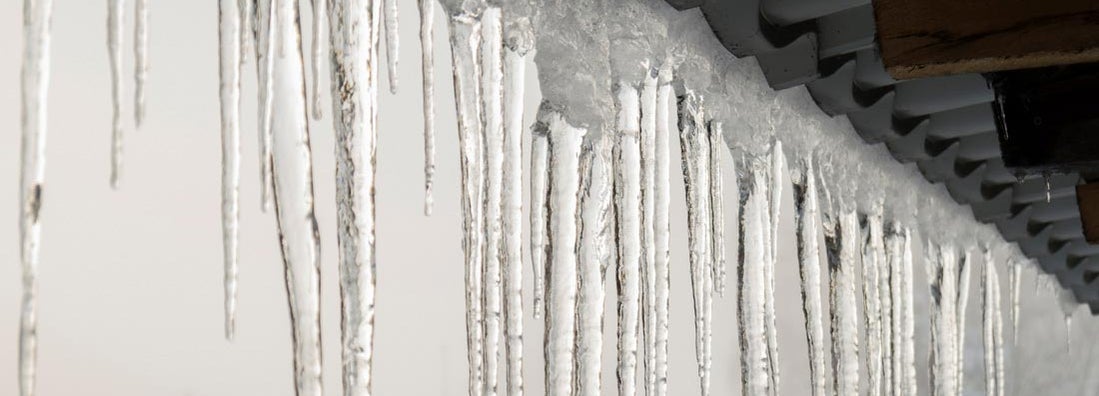Beware of Ice Dams on Your South Dakota Home

Paul Martin is the Director of Education and Development for Myron Steves, one of the largest, most respected insurance wholesalers in the southern U.S.

Winters in South Dakota can be bone-chillingly cold and cause an extensive amount of property damage. One of the most important aspects of the home to protect is the roof, but ice dams can make that difficult. Without taking the right precautions, ice dams can cause water damage and other disasters.
Knowing how to tackle ice before it forms an ice dam and causes serious damage can help save you from filing any insurance claims. But your South Dakota independent insurance agent can still get you covered by home insurance for extra protection. First, though, here's a guide to avoiding ice dams altogether.
What Are Ice Dams and How Do They Cause Damage?
Ice dams act like dams on your roof. Ice can form at the edge of the roof or in your gutters, and because it melts more slowly than snow, it can trap a lot of water up there. When this water has no way to drain off of the roof, it can cause damage externally and even lead to water leaks internally.
Ice dams can damage your home by:
- Destroying your roof, gutters, etc. from the weight of the trapped melting snow
- Causing internal damage because the water ends up seeping inside the home through cracks in the exterior
- Leaking water leading to mold, mildew, freezing, and flooding
- Leaking and ruining appliances and electronics
Preventing ice dams before they occur can greatly decrease your chances of property damage during the winter.
What Causes Ice Dams?
A mix of warmer and colder temperatures can lead to ice dams on your roof. An ice dam can form if the roof has snow on it and starts to warm up and melt, and other areas on the roof are still cold enough for ice to remain. The melting snow in the warmer areas gets trapped by the ice in the colder areas, like the edges of your roof, areas in the shade, and your gutters.
When this water attempts to drain but has nowhere to go, it can find its way inside the house. This can cause damage to ceilings, walls, insulation, and more. Standing water can create a new opening in the home, or it can find a way through the little cracks around windows and other areas.
How Can I Help Prevent Ice Dams?
There are several measures you can take to prevent ice dams from ever forming on your roof in the first place, including:
- Sealing any house leaks before winter comes
- Removing snow from your roof quickly
- Having a professional inspect your roof for leaks
- Replacing old insulation in the home
- Keeping gutters clear of leaves and other debris
- Sealing any areas where warm air could leak into your home's attic, like from exhaust fans, vent pipes, and light fixtures
Following these simple steps can help increase your chances of avoiding ice dams during the winter, and potentially avoiding having to file any home insurance claims as well.
What Should I Do if Water Is Flowing into the House Structure?
If an ice dam gets severe enough for water to begin flowing into your home's structure, it's still possible to prevent further property damage. You can do this by creating channels in the ice dam, allowing water to start to drain where it needs to.
Take the following steps if water starts flowing into your home:
- Hose your roof on a warmer day, starting at the lower edge of the dam and working upwards
- Remove valuables from areas where water leaks have occurred
- Add towels to areas where water leaks have occurred
- Remove excess water with a wet vac
- Place fans and dehumidifiers in areas where water has accumulated inside
Drying the inside of your home ASAP can help prevent the formation of mold and mildew. Keep in mind that if you choose to create a channel in your ice dams, this is only a temporary solution that will last for a few days.
Does Home Insurance Cover Ice Dam Damage?
Insurance expert Paul Martin said that ice dams can be a tricky claim to get covered by home insurance. The cause of resulting water damage to your home by an ice dam may or may not be covered. If water seeps inside the home but there is no damage to the exterior of the home, that claim won't be covered.
Home insurance provides coverage for roof collapses that happen due to the weight of ice or snow that built up. If your roof collapses due to an ice dam and your personal property inside the home gets damaged too, your coverage should help reimburse for that as well. Be sure to review your specific policy with the help of your South Dakota independent insurance agent before winter rolls around.
When Are Ice Dams Not Covered by Home Insurance?
Home insurance doesn't cover certain parts of your property if they get damaged by freezing or thawing of ice or the weight of water from melted snow and ice.
Home insurance doesn't cover freezing damage to:
- Retaining walls
- Piers, docks, and wharves
- Fences and patios
- Pavement and swimming pools
- Foundation, bulkheads, walls, and other supporting elements
If ice dams cause damage to any of these elements of your home, you could be out of luck when it comes to trying to file a home insurance claim.
If I Get Hurt While Trying to Fix Ice Dams, Does Insurance Pay Medical Bills?
It's highly unlikely that your home insurance would cover your injuries if you were making repairs to your home or fixing ice dams. You'd have to rely on your health insurance to help pay for any medical treatments required. However, if you had a neighbor over and they got injured on your property, your home insurance could cover them.
If your neighbor sued you for their injuries, you'd be covered through your home insurance's liability coverage. You could also pay for their injuries through the medical payments section of your home insurance. Review your home insurance policy with your South Dakota independent insurance agent to find out more about how it protects you from ice dams and other resulting complications.
Why Choose a South Dakota Independent Insurance Agent?
South Dakota independent insurance agents simplify the process by shopping and comparing insurance quotes for you. Not only that, but they’ll also cut through the jargon and clarify the fine print so you know exactly what you’re getting.
South Dakota independent insurance agents also have access to multiple insurance companies, ultimately finding you the best home insurance coverage, accessibility, and competitive pricing while working for you.
